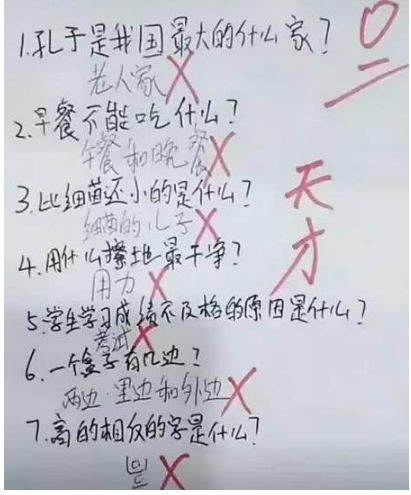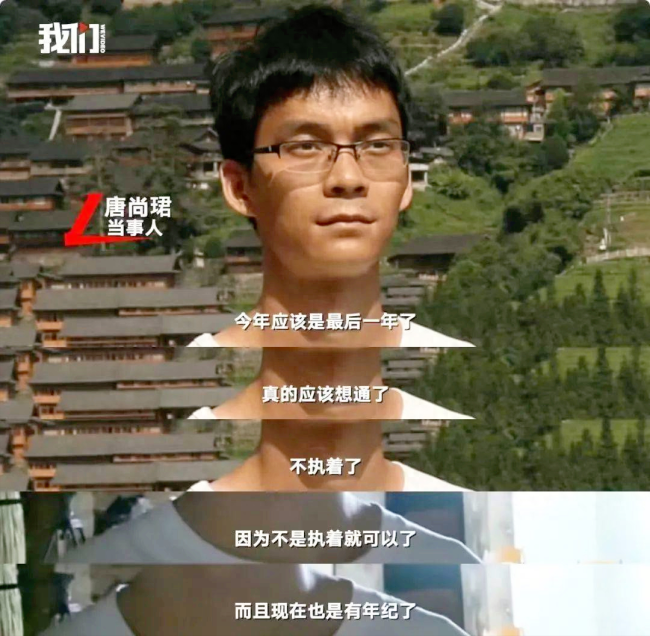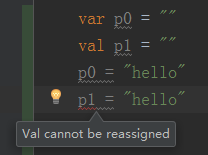本文实例讲述了Java实现的傅里叶变化算法。分享给大家供大家参考,具体如下:
用JAVA实现傅里叶变化 结果为复数形式 a+bi
废话不多说,实现代码如下,共两个class
FFT.class 傅里叶变化功能实现代码
package fft.test;/************************************************************************* * Compilation: javac FFT.java Execution: java FFT N Dependencies: Complex.java * * Compute the FFT and inverse FFT of a length N complex sequence. Bare bones * implementation that runs in O(N log N) time. Our goal is to optimize the * clarity of the code, rather than performance. * * Limitations ----------- - assumes N is a power of 2 * * - not the most memory efficient algorithm (because it uses an object type for * representing complex numbers and because it re-allocates memory for the * subarray, instead of doing in-place or reusing a single temporary array) * *************************************************************************/public class FFT { // compute the FFT of x[], assuming its length is a power of 2 public static Complex[] fft(Complex[] x) { int N = x.length; // base case if (N == 1) return new Complex[] { x[0] }; // radix 2 Cooley-Tukey FFT if (N % 2 != 0) { throw new RuntimeException("N is not a power of 2"); } // fft of even terms Complex[] even = new Complex[N / 2]; for (int k = 0; k < N / 2; k++) { even[k] = x[2 * k]; } Complex[] q = fft(even); // fft of odd terms Complex[] odd = even; // reuse the array for (int k = 0; k < N / 2; k++) { odd[k] = x[2 * k + 1]; } Complex[] r = fft(odd); // combine Complex[] y = new Complex[N]; for (int k = 0; k < N / 2; k++) { double kth = -2 * k * Math.PI / N; Complex wk = new Complex(Math.cos(kth), Math.sin(kth)); y[k] = q[k].plus(wk.times(r[k])); y[k + N / 2] = q[k].minus(wk.times(r[k])); } return y; } // compute the inverse FFT of x[], assuming its length is a power of 2 public static Complex[] ifft(Complex[] x) { int N = x.length; Complex[] y = new Complex[N]; // take conjugate for (int i = 0; i < N; i++) { y[i] = x[i].conjugate(); } // compute forward FFT y = fft(y); // take conjugate again for (int i = 0; i < N; i++) { y[i] = y[i].conjugate(); } // divide by N for (int i = 0; i < N; i++) { y[i] = y[i].scale(1.0 / N); } return y; } // compute the circular convolution of x and y public static Complex[] cconvolve(Complex[] x, Complex[] y) { // should probably pad x and y with 0s so that they have same length // and are powers of 2 if (x.length != y.length) { throw new RuntimeException("Dimensions don't agree"); } int N = x.length; // compute FFT of each sequence,求值 Complex[] a = fft(x); Complex[] b = fft(y); // point-wise multiply,点值乘法 Complex[] c = new Complex[N]; for (int i = 0; i < N; i++) { c[i] = a[i].times(b[i]); } // compute inverse FFT,插值 return ifft(c); } // compute the linear convolution of x and y public static Complex[] convolve(Complex[] x, Complex[] y) { Complex ZERO = new Complex(0, 0); Complex[] a = new Complex[2 * x.length];// 2n次数界,高阶系数为0. for (int i = 0; i < x.length; i++) a[i] = x[i]; for (int i = x.length; i < 2 * x.length; i++) a[i] = ZERO; Complex[] b = new Complex[2 * y.length]; for (int i = 0; i < y.length; i++) b[i] = y[i]; for (int i = y.length; i < 2 * y.length; i++) b[i] = ZERO; return cconvolve(a, b); } // display an array of Complex numbers to standard output public static void show(Complex[] x, String title) { System.out.println(title); System.out.println("-------------------"); int complexLength = x.length; for (int i = 0; i < complexLength; i++) { // 输出复数 // System.out.println(x[i]); // 输出幅值需要 * 2 / length System.out.println(x[i].abs() * 2 / complexLength); } System.out.println(); }/** * 将数组数据重组成2的幂次方输出 * * @param data * @return */ public static Double[] pow2DoubleArr(Double[] data) { // 创建新数组 Double[] newData = null; int dataLength = data.length; int sumNum = 2; while (sumNum < dataLength) { sumNum = sumNum * 2; } int addLength = sumNum - dataLength; if (addLength != 0) { newData = new Double[sumNum]; System.arraycopy(data, 0, newData, 0, dataLength); for (int i = dataLength; i < sumNum; i++) { newData[i] = 0d; } } else { newData = data; } return newData; } /** * 去偏移量 * * @param originalArr * 原数组 * @return 目标数组 */ public static Double[] deskew(Double[] originalArr) { // 过滤不正确的参数 if (originalArr == null || originalArr.length <= 0) { return null; } // 定义目标数组 Double[] resArr = new Double[originalArr.length]; // 求数组总和 Double sum = 0D; for (int i = 0; i < originalArr.length; i++) { sum += originalArr[i]; } // 求数组平均值 Double aver = sum / originalArr.length; // 去除偏移值 for (int i = 0; i < originalArr.length; i++) { resArr[i] = originalArr[i] - aver; } return resArr; } public static void main(String[] args) { // int N = Integer.parseInt(args[0]); Double[] data = { -0.35668879080953375, -0.6118094913035987, 0.8534269560320435, -0.6699697478438837, 0.35425500561437717, 0.8910250650549392, -0.025718699518642918, 0.07649691490732002 }; // 去除偏移量 data = deskew(data); // 个数为2的幂次方 data = pow2DoubleArr(data); int N = data.length; System.out.println(N + "数组N中数量...."); Complex[] x = new Complex[N]; // original data for (int i = 0; i < N; i++) { // x[i] = new Complex(i, 0); // x[i] = new Complex(-2 * Math.random() + 1, 0); x[i] = new Complex(data[i], 0); } show(x, "x"); // FFT of original data Complex[] y = fft(x); show(y, "y = fft(x)"); // take inverse FFT Complex[] z = ifft(y); show(z, "z = ifft(y)"); // circular convolution of x with itself Complex[] c = cconvolve(x, x); show(c, "c = cconvolve(x, x)"); // linear convolution of x with itself Complex[] d = convolve(x, x); show(d, "d = convolve(x, x)"); }}/********************************************************************* * % java FFT 8 x ------------------- -0.35668879080953375 -0.6118094913035987 * 0.8534269560320435 -0.6699697478438837 0.35425500561437717 0.8910250650549392 * -0.025718699518642918 0.07649691490732002 * * y = fft(x) ------------------- 0.5110172121330208 -1.245776663065442 + * 0.7113504894129803i -0.8301420417085572 - 0.8726884066879042i * -0.17611092978238008 + 2.4696418005143532i 1.1395317305034673 * -0.17611092978237974 - 2.4696418005143532i -0.8301420417085572 + * 0.8726884066879042i -1.2457766630654419 - 0.7113504894129803i * * z = ifft(y) ------------------- -0.35668879080953375 -0.6118094913035987 + * 4.2151962932466006E-17i 0.8534269560320435 - 2.691607282636124E-17i * -0.6699697478438837 + 4.1114763914420734E-17i 0.35425500561437717 * 0.8910250650549392 - 6.887033953004965E-17i -0.025718699518642918 + * 2.691607282636124E-17i 0.07649691490732002 - 1.4396387316837096E-17i * * c = cconvolve(x, x) ------------------- -1.0786973139009466 - * 2.636779683484747E-16i 1.2327819138980782 + 2.2180047699856214E-17i * 0.4386976685553382 - 1.3815636262919812E-17i -0.5579612069781844 + * 1.9986455722517509E-16i 1.432390480003344 + 2.636779683484747E-16i * -2.2165857430333684 + 2.2180047699856214E-17i -0.01255525669751989 + * 1.3815636262919812E-17i 1.0230680492494633 - 2.4422465262488753E-16i * * d = convolve(x, x) ------------------- 0.12722689348916738 + * 3.469446951953614E-17i 0.43645117531775324 - 2.78776395788635E-18i * -0.2345048043334932 - 6.907818131459906E-18i -0.5663280251946803 + * 5.829891518914417E-17i 1.2954076913348198 + 1.518836016779236E-16i * -2.212650940696159 + 1.1090023849928107E-17i -0.018407034687857718 - * 1.1306778366296569E-17i 1.023068049249463 - 9.435675069681485E-17i * -1.205924207390114 - 2.983724378680108E-16i 0.796330738580325 + * 2.4967811657742562E-17i 0.6732024728888314 - 6.907818131459906E-18i * 0.00836681821649593 + 1.4156564203603091E-16i 0.1369827886685242 + * 1.1179436667055108E-16i -0.00393480233720922 + 1.1090023849928107E-17i * 0.005851777990337828 + 2.512241462921638E-17i 1.1102230246251565E-16 - * 1.4986790192807268E-16i *********************************************************************/Complex.class 复数类
package fft.test;/****************************************************************************** * Compilation: javac Complex.java * Execution: java Complex * * Data type for complex numbers. * * The data type is "immutable" so once you create and initialize * a Complex object, you cannot change it. The "final" keyword * when declaring re and im enforces this rule, making it a * compile-time error to change the .re or .im instance variables after * they've been initialized. * * % java Complex * a = 5.0 + 6.0i * b = -3.0 + 4.0i * Re(a) = 5.0 * Im(a) = 6.0 * b + a = 2.0 + 10.0i * a - b = 8.0 + 2.0i * a * b = -39.0 + 2.0i * b * a = -39.0 + 2.0i * a / b = 0.36 - 1.52i * (a / b) * b = 5.0 + 6.0i * conj(a) = 5.0 - 6.0i * |a| = 7.810249675906654 * tan(a) = -6.685231390246571E-6 + 1.0000103108981198i * ******************************************************************************/import java.util.Objects;public class Complex { private final double re; // the real part private final double im; // the imaginary part // create a new object with the given real and imaginary parts public Complex(double real, double imag) { re = real; im = imag; } // return a string representation of the invoking Complex object public String toString() { if (im == 0) return re + ""; if (re == 0) return im + "i"; if (im < 0) return re + " - " + (-im) + "i"; return re + " + " + im + "i"; } // return abs/modulus/magnitude public double abs() { return Math.hypot(re, im); } // return angle/phase/argument, normalized to be between -pi and pi public double phase() { return Math.atan2(im, re); } // return a new Complex object whose value is (this + b) public Complex plus(Complex b) { Complex a = this; // invoking object double real = a.re + b.re; double imag = a.im + b.im; return new Complex(real, imag); } // return a new Complex object whose value is (this - b) public Complex minus(Complex b) { Complex a = this; double real = a.re - b.re; double imag = a.im - b.im; return new Complex(real, imag); } // return a new Complex object whose value is (this * b) public Complex times(Complex b) { Complex a = this; double real = a.re * b.re - a.im * b.im; double imag = a.re * b.im + a.im * b.re; return new Complex(real, imag); } // return a new object whose value is (this * alpha) public Complex scale(double alpha) { return new Complex(alpha * re, alpha * im); } // return a new Complex object whose value is the conjugate of this public Complex conjugate() { return new Complex(re, -im); } // return a new Complex object whose value is the reciprocal of this public Complex reciprocal() { double scale = re * re + im * im; return new Complex(re / scale, -im / scale); } // return the real or imaginary part public double re() { return re; } public double im() { return im; } // return a / b public Complex divides(Complex b) { Complex a = this; return a.times(b.reciprocal()); } // return a new Complex object whose value is the complex exponential of // this public Complex exp() { return new Complex(Math.exp(re) * Math.cos(im), Math.exp(re) * Math.sin(im)); } // return a new Complex object whose value is the complex sine of this public Complex sin() { return new Complex(Math.sin(re) * Math.cosh(im), Math.cos(re) * Math.sinh(im)); } // return a new Complex object whose value is the complex cosine of this public Complex cos() { return new Complex(Math.cos(re) * Math.cosh(im), -Math.sin(re) * Math.sinh(im)); } // return a new Complex object whose value is the complex tangent of this public Complex tan() { return sin().divides(cos()); } // a static version of plus public static Complex plus(Complex a, Complex b) { double real = a.re + b.re; double imag = a.im + b.im; Complex sum = new Complex(real, imag); return sum; } // See Section 3.3. public boolean equals(Object x) { if (x == null) return false; if (this.getClass() != x.getClass()) return false; Complex that = (Complex) x; return (this.re == that.re) && (this.im == that.im); } // See Section 3.3. public int hashCode() { return Objects.hash(re, im); } // sample client for testing public static void main(String[] args) { Complex a = new Complex(3.0, 4.0); Complex b = new Complex(-3.0, 4.0); System.out.println("a = " + a); System.out.println("b = " + b); System.out.println("Re(a) = " + a.re()); System.out.println("Im(a) = " + a.im()); System.out.println("b + a = " + b.plus(a)); System.out.println("a - b = " + a.minus(b)); System.out.println("a * b = " + a.times(b)); System.out.println("b * a = " + b.times(a)); System.out.println("a / b = " + a.divides(b)); System.out.println("(a / b) * b = " + a.divides(b).times(b)); System.out.println("conj(a) = " + a.conjugate()); System.out.println("|a| = " + a.abs()); System.out.println("tan(a) = " + a.tan()); }}希望本文所述对大家java程序设计有所帮助。
新闻热点
疑难解答
图片精选



















